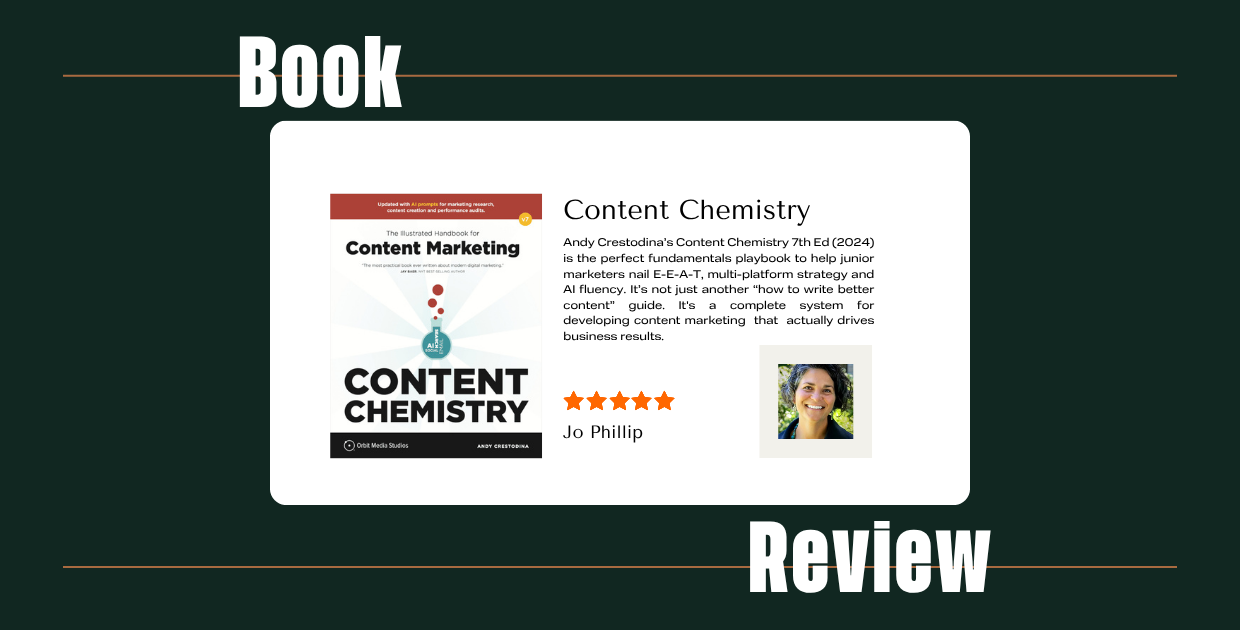How Generative AI Can Empower B2B Marketers
Written by
A note from the Weidert Group editors:
Generative artificial intelligence (generative AI) has to be one of the top marketing buzzwords in 2023, and for good reason. Any tool that has the power to disrupt an entire profession should be sought to be understood and used responsibly. And of course, our friends at HubSpot — who are always leaders in marketing technology — are part of the conversation as both thought leaders and software developers of tools like ChatSpot and HubSpot Content Assistant.
We asked them to unpack this hot topic for us and boy did Tony Do, Marketing Manager and SEO Strategist for HubSpot deliver. Get up to speed (at least for today) on this evolving technology by reading below, then head over to our LinkedIn to continue the conversation. Cheers!
What Is Generative AI?
Generative AI, as a groundbreaking technology, goes beyond being a mere technology or a business case; it represents a pivotal element of a society where humans and machines collaborate harmoniously. This innovative sub-field of artificial intelligence enables machines to learn from existing artifacts and generate new, realistic ones on a large scale. Generative AI makes use of learning algorithms to create new elements exhibiting the characteristics of the training data without merely replicating it. This results in a wide range of novel content that can be produced, including images, videos, music, speech, text, software code, and product designs.
How Does Generative AI Work?
The underlying techniques employed in generative AI are constantly evolving. At its core are AI foundation models, which undergo training on extensive sets of unlabeled data capable of being utilized for various tasks through additional fine-tuning. The development of these trained models necessitates complex mathematical algorithms and immense computing power. In essence, these models function as prediction algorithms.
Today, generative AI predominantly generates content in response to natural language requests, eliminating the need for explicit coding knowledge.
This user-friendly aspect has opened up new possibilities and made generative AI accessible to a broader range of individuals.
By leveraging generative AI, users can harness its ability to learn from existing artifacts and create new, authentic pieces that bear resemblance to the training data but exhibit novelty and uniqueness.
How is Generative AI Being Used?
The impact of generative AI extends to numerous domains. In the realm of visual arts, it can produce lifelike images and videos with stunning realism, and in the realm of marketing and sales, it can produce personalized content to more effectively reach your target audience.
Generative AI represents a transformative force in society, facilitating collaboration between humans and machines. With its ability to learn from existing artifacts and generate new, realistic content, generative AI opens up new horizons across various creative and practical domains. As the field continues to evolve, it is imperative to navigate the ethical challenges and ensure that generative AI remains a powerful tool for positive societal development.
Applications of Generative AI in B2B Marketing
There are significant opportunities for B2B marketers to use generative AI, particularly in complex and niche industries. This advanced technology has the capability to process vast amounts of data – even if complex – and extract meaningful insights. Let AI help you analyze and interpret complex datasets, uncover patterns, identify key trends and extract actionable intelligence. This enables marketers to gain a deeper understanding of their target audience and develop effective strategies.
Moreover, generative AI can assist marketers in compiling text and images to create various types of content, such as blog posts, email content, and social media ads. With its ability to distill complex information, generative AI can synthesize the relevant data and present it in a coherent and engaging manner. This not only saves time but also ensures that the generated content aligns with the target audience's preferences and needs. By automating content creation, B2B marketers can focus on other strategic aspects of their campaigns while maintaining a consistent and impactful content output.
In addition to assisting with content creation, generative AI can also support B2B marketers in creative tasks, including design. By understanding the intricacies of a niche industry, generative AI can distill complex brand attributes, industry-specific symbols, and visual elements to generate designs that accurately represent the essence of the business. This streamlines the design process, offers creative inspiration, and ensures the brand's visual identity resonates with the target audience.
The benefits of generative AI extend beyond simplifying complex information and content creation. It enables B2B marketers to optimize their marketing efforts by delivering personalized experiences to their target audience. Identify individual preferences and behaviors through AI’s analysis of vast datasets, to tailor messaging, offers, and campaigns to specific segments. This level of personalization enhances customer engagement, improves conversion rates, and fosters long-term customer loyalty.
However, it is essential to strike a balance between automation and the human touch. While generative AI can be a valuable asset, it should not replace the creativity and critical thinking of marketers. Human oversight and creativity remain crucial to ensure that the generated content aligns with the brand's values and resonates with the target audience.
The significant opportunities for B2B marketers in complex and niche industries cannot be overstated. Generative AI’s ability to process complex data, assist in content creation, and aid in creative tasks empowers marketers to make data-driven decisions, create compelling content, and establish a strong brand presence. By embracing generative AI, B2B marketers can leverage its potential to unlock new levels of efficiency, personalization, and success in their marketing efforts.
Generative AI to the Rescue: Hubspot’s Content Assistant
HubSpot's Content Assistant is a powerful tool designed to streamline daily tasks and contribute to the growth of businesses. Alongside the ChatSpot feature, it empowers teams by leveraging artificial intelligence to facilitate content ideation, creation, and sharing in a quick and efficient manner.
The AI content assistant of HubSpot utilizes OpenAI's GPT model, a state-of-the-art language generation model, to aid individuals across your team in generating high-quality content. The capabilities of this advanced AI technology can enhance the user's content creation process and help produce engaging and relevant materials.
One of the key advantages of HubSpot's Content Assistant is its seamless integration with other HubSpot products. This native integration allows users to effortlessly switch between manual content creation and AI-powered assistance. Whether you need copy for blog posts, landing pages, marketing emails, or other marketing collateral, the content assistant can lend a helping hand throughout the content generation process.
For a quick overview, watch this HubSpot Content Assistant introduction video:
Let’s discuss five specific ways the HubSpot Content Assistant can aid your process:
- Blog Post Topic Generation: HubSpot’s Content Assistant can generate relevant and compelling topic ideas for your blog posts. By leveraging its AI capabilities, it takes into account your target audience, industry trends, and search engine optimization considerations to provide valuable suggestions.
- Blog Post Outlines: HubSpot’s Content Assistant can help in creating outlines for blog posts. By analyzing the provided information or existing content, it generates a structured framework that serves as a starting point for further content development.
- Paragraph Writing: HubSpot’s Content Assistant can assist in writing entire paragraphs, enabling users to quickly generate well-crafted content. Whether it's adding supporting information, summarizing key points, or expanding on ideas, the Content Assistant can help create cohesive and informative paragraphs.
- Sales Prospecting Emails: HubSpot’s Content Assistant is capable of writing persuasive and personalized sales prospecting emails. By leveraging its language generation capabilities, it can provide compelling copy that captures the attention of prospects and improves the effectiveness of outreach efforts.
- Marketing Copy: With the help of HubSpot’s Content Assistant, marketers can generate impactful and persuasive marketing copy for various purposes. From crafting engaging headlines and taglines to developing compelling product descriptions or ad copy, the tool assists in creating captivating content that drives conversions.
Altogether, HubSpot’s Content Assistant is a valuable asset for businesses seeking to enhance their content creation processes and improve efficiency. By leveraging the power of AI, users are empowered to generate high-quality content quickly, ensuring that they can meet the demands of their marketing initiatives and connect with their target audience effectively.
ChatSpot
ChatSpot is an integral component of HubSpot's suite of AI-powered content assistant tools. With the aim of streamlining tasks and elevating the quality of work, ChatSpot uses the capabilities of OpenAI's GPT model to unlock productivity and creativity for marketers, sales teams, and service professionals.
ChatSpot eliminates the need for switching between different tools or learning new ones because it integrates with other HubSpot products. Users can easily toggle between manual content creation and AI-powered assistance, allowing them to generate compelling copy for various channels and execute other actions.
By utilizing chat-based commands within the HubSpot platform, users can leverage ChatSpot to perform a wide range of functions they would typically carry out in HubSpot. It has the ability to handle a wide range of actions, including contact creation, automated follow-ups, reporting, and segment creation.
Here are five key points about ChatSpot's functions:
- Streamlined Tasks: ChatSpot accelerates the execution of tasks by providing a conversational interface. Users can interact with this AI tool using natural language commands, enabling them to quickly perform actions within the HubSpot ecosystem.
- Contact Management: With ChatSpot, creating new contacts becomes much easier. Instead of manual data entry, users can simply instruct ChatSpot to create new contacts on the fly, saving time and reducing the chances of errors.
- Automated Follow-ups: ChatSpot can be instructed to send follow-up emails, allowing users to automate parts of their email marketing workflows. This feature streamlines the process of nurturing leads and maintaining communication with prospects and customers.
- Reporting Capabilities: By utilizing ChatSpot's integration with HubSpot's reporting features, users can request reports on various metrics and performance indicators without navigating complex menus. ChatSpot makes it easier to access valuable insights and analytics.
- Segment Creation: Users can create new segments with minimal effort when they use ChatSpot. By providing specific criteria and instructions, ChatSpot generates targeted segments that enable precise targeting and personalized marketing efforts.
The capabilities of AI tools are astounding. Augmenting professional roles with AI tools can enable users to optimize their content creation process and streamline their workflows, ultimately saving time and resources. This enables marketers, sales teams, and service professionals to focus on high-value tasks and leverage AI-powered assistance to drive business growth effectively.
Parting Advice
We have discussed a slew of benefits in the world of generative AI, specifically HubSpot's Content Assistant and ChatSpot, and hope you’re ready to propel your efforts to new heights! Armed with this knowledge, you're equipped to unlock new levels of productivity and creativity in your content creation efforts.
Remember, generative AI is not just a technology, but a transformative force that can elevate your marketing strategies across industries. Embrace the power of AI to streamline tasks, distill complex information, and generate compelling content.
Let HubSpot's AI-powered tools be your trusted companions, empowering you to drive growth, engage your audience, and achieve remarkable results. The future of content creation awaits—embrace it with confidence and embark on your path to success!
Subscribe To Our Blog
Information. Insights. Ideas. Get notified every time a new Weidert Group blog article is published – subscribe now!
You May Also Like...

Content Marketing
AI-Era Marketing Simplified: Content Chemistry, 7th Edition

Marketing Case Studies
How ESOP Partners' Website Strategy Boosted SQLs by 900%

Marketing Technology
What is an AI Agent? Ready or Not, They're Reshaping How Industrials Market & Sell
Accelerate Your Growth with
Weidert Group
If you’re ready to explore a partnership, request a personalized consultation with our team.

